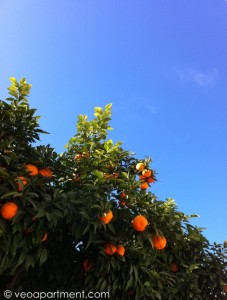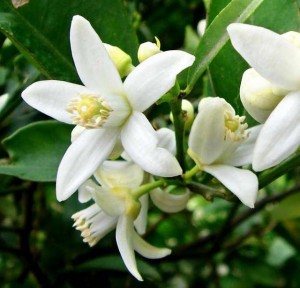Seville is, as we all know, famous for its orange trees and oranges, but if you’re not a jam-maker, botanist or citrus fruit farmer, it may come as a surprise to learn that this is the season when the oranges are harvested. There are probably lots of other things you don’t know about oranges, but luckily for you we are here to ask all those questions you could never be bothered to ask.
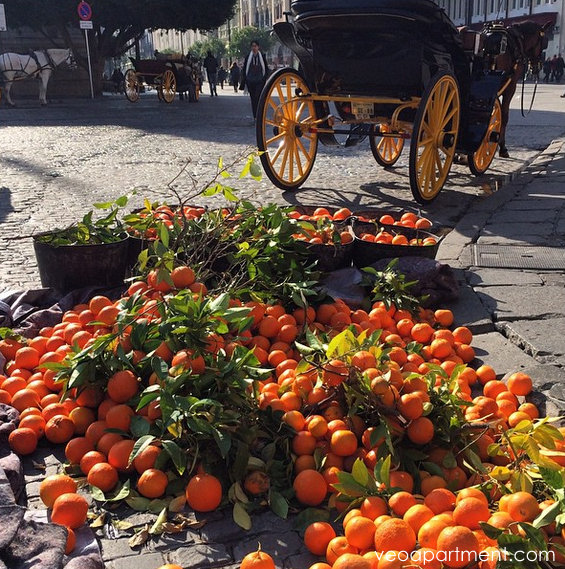 oranges being harvested in the centre of Seville
oranges being harvested in the centre of Seville
Oranges are grown in lots of places, but where did they come from originally?
Oranges are thought to be native to south-east Asia, probably north-east India, southern China and Vietnam.
How were they introduced to Spain?
Oranges were introduced to the Eastern Roman Empire from India in about the 1st century, and gradually spread throughout the eastern Mediterranean and North Africa. They were brought to Spain by the Moors in the 10th century. It is sometimes said that Hercules, also credited with being one of the founders of Seville, stole the first oranges from the Gardens of the Hesperides, where they were called Golden Apples.
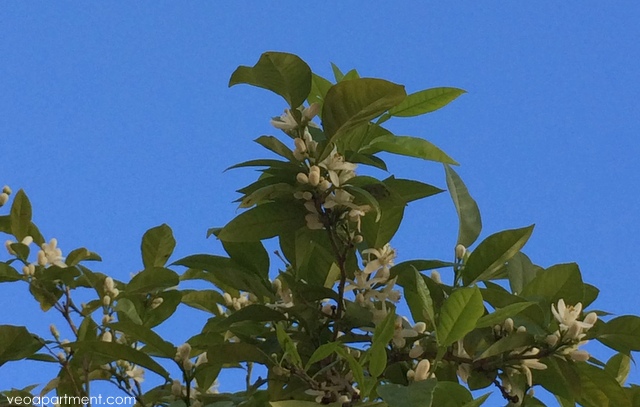 fragrant orange blossom (azahar)
fragrant orange blossom (azahar)
Why are they called oranges?
Ultimately, this is a similar question to “why is water wet?” However, the Indian word for orange was “naranyan”, which means “inner fragrance”, and most European languages use similar names, such as Spanish “naranja”. In English, it was originally a norange (no, that’s not a typo).
Sweet oranges are obviously good to eat, but why choose to plant bitter oranges?
Precisely for that reason – people wouldn’t eat them and the trees would remain decorative throughout the season until the fruit were harvested. In fact, decoration and shade were the primary reasons for growing orange trees. In China they were also thought to bring their owners happiness and good fortune, and this tradition may have spread with the trees.
What are they used for?
In the Middle Ages the use of oranges was primarily medicinal. Later they were used for perfumes, wines and flavourings, particularly sweets, and since the 17th century (when sugar from Caribbean plantations became available in large quantities) the majority of bitter oranges have been exported to England to make Seville Orange Marmalade. Also exported was the Spanish word for jam – “mermelada”.
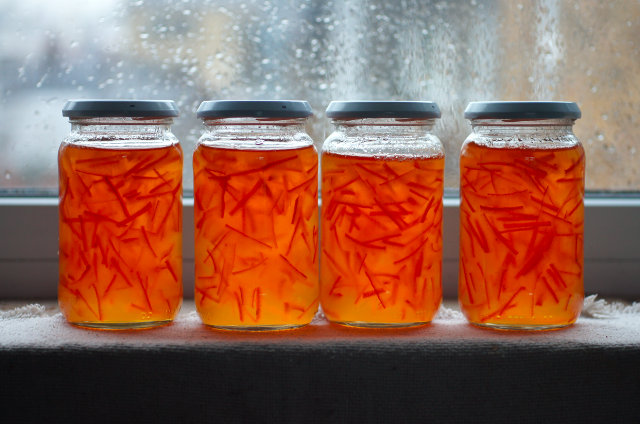 photo: Poires au Chocolate – click here for a great marmalade recipe using Seville oranges
photo: Poires au Chocolate – click here for a great marmalade recipe using Seville oranges
How many oranges are there in Seville?
On the official count there are 31,306 orange trees in the city of Seville, producing just over 4 million kilos of oranges.
There’s still time to get to Seville to see the orange trees in full fruit, or in full bloom. A few weeks after the harvest (late February-early March) is orange blossom season, when for about three weeks the city is full of the smell of the azahar. This is one of the best times of year to visit Seville, but book an apartment now, while there’s still space!
